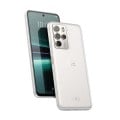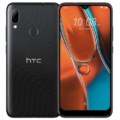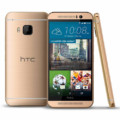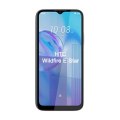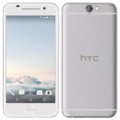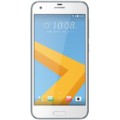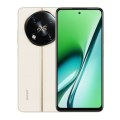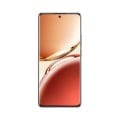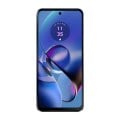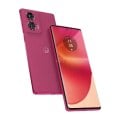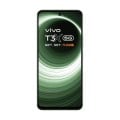HTC One (E8)
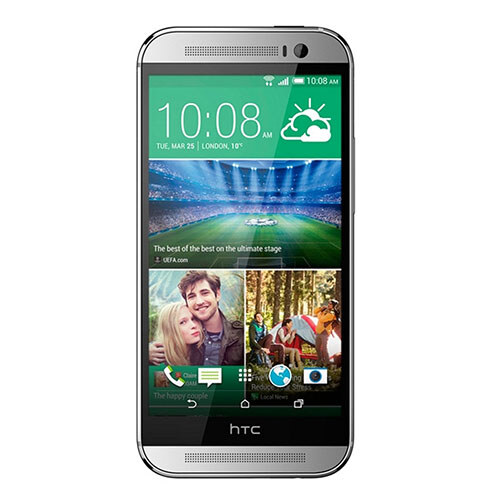





-
: Quad-core 2.5 GHz Krait 400
-
: 2 GB
-
: 16 GB
-
: Super IPS LCD3, 5.0 inches
-
: 13 mega pixels
-
: Android v4.4.2 (KitKat)
Ergonomically enhanced design brings the iconic HTC One family’s signature look to a new level. Vertically curved to fit no matter how it’s held, the HTC One (E8) dual sim features tapered sides, edge-to-edge display and a lightweight unibody frame that’s built to perform and designed to impress.
Ergonomically enhanced design brings the iconic HTC One family’s signature look to a new level. Vertically curved to fit no matter how it’s held, the HTC One (E8) dual sim features tapered sides, edge-to-edge display and a lightweight unibody frame that’s built to perform and designed to impress.
Take rich, high-definition shots with 13MP main camera. You won’t miss a thing with generous 5” display viewfinder and dual curve design that gives you more grip and shooting angles. Complete with Motion Launch™ gesture controls for intuitive use and easy shortcuts.
The HTC One (E8) dual sim features Sense 6: quick shortcuts and easy controls for a superior smartphone experience.
MOTION LAUNCH SHORTCUT CONTROLS:
Answer incoming calls by raising your phone to your ear
Launch your camera by holding your phone in landscape and pressing the volume rocker
Double tap your screen or swipe up to wake up your phone
Swipe down to make a quick voice call
HTC One (E8) - SPECIFICATIONS
General
-
ModelHTC One (E8)
-
Released01-06-2014
-
StatusAvailable
Design
-
Type Design Type called form factor refers to a mobile phone's size, shape, and style as well as the layout and position of major components of phone. There are three major form factors seen in mobile phones => bar phones, folding phones and sliding phones.Bar
-
Dimensions146.4 x 70.7 x 9.9 mm (5.76 x 2.78 x 0.39 in)
-
Weight145 grams (5.11 oz)
Display
-
Display Type Display Technology => A number of display technologies and types used in mobile phones => TFT (Thin Film Transistor), IPS (In-Place Switching), OLED (Organic Light Emitting Diode), AMOLED (Active-Matrix Organic Light-Emitting Diode), Super AMOLED (an even advanced version of AMOLED), Resistive Touchscreen (Resistive touchscreens contain two layer of conductive material with a very small gap between them which acts as a resistance), Capacitive Touchsceen (Capacitive touchscreen technology consists of a layer of glass coated with a transparent conductor)Super IPS LCD3
-
Size5.0 inches
-
Resolution1080 x 1920 pixels
-
Display Colors Display Colors is refers to the number of different shades of colors that the screen is capable of displaying => 64K colors, 256K colors and 16 million colors, Obviously 16M is highest available range of colors and better than others.16M colors
-
Pixel Density Pixel Density (PPI) is refers to the concentration of pixels on a particular display, measured in pixels per inch (ppi). Pixel density is calculated by dividing the diagonal pixel resolution of a display by its diagonal size, higher pixel density better display quality.441 ppi pixel density
-
Touch ScreenCapacitive touchscreen
-
Display Protection Display Protection => Gorilla Glass is a special alkali-aluminosilicate glass shield with exceptional damage resistance that helps protect mobile displays from scratches, drops, and bumps of everyday use, It is always better to go for a smartphone with Gorilla Glass for that added protection and peace of mind.Corning Gorilla Glass 3
-
FeaturesMultitouch
Hardware
-
GPU GPU (Graphics Processing Unit) is a single-chip processor designed to rapidly manipulate and alter memory to accelerate the creation of images in a frame buffer intended for output to a display, This includes things such as lighting effects, object transformations, and 3D motion.Adreno 330
-
RAM (Memory) RAM (Random Access Memory) is a type of computer memory that can be accessed randomly, any byte of memory can be accessed without touching the preceding bytes that allows information to be stored and accessed quickly from random locations. RAM is the most common type of memory found in computer systems, smartphones, tablets and other electronic devices.2 GB
-
Internal Storage Internal Storage is a data storage space (flash memory) mostly used in smartphones, tablets and other electronic devices where operating system, apps, music, photos, videos, files and other user data Is stored.16 GB
-
Memory Card Slot Memory Card Slot is a special slot for inserting a memory card. Memory cards allow you to expand the phone's built-in memory, A memory card (sometimes called a flash memory card or a storage card) is a small storage medium used to store data such as text, pictures, audio, and video, for use on small, portable or remote computing devices such as mobile phones, mp3 players, digital cameras.Yes, microSD, up to 128 GB
-
Sensors Sensors are electronic components that detects and responds to some type of input from the physical environment. The specific input could be light, heat, motion, moisture, pressure and location, The output is generally a signal that is converted to use in computing systems, a location sensor, such as a GPS receiver is able to detect current location of your electronic device.Accelerometer, gyro, proximity, compass, barometer
Software
-
Operating System OS => Every computer system run on a base software called Operating System (OS). Operating System controls all basic operations of the computer (such as smartphone, PDAs, tablet computers and other handheld devices). The Operating System allows the user to install and run third party applications (apps), apps are used to add new functionality to the device.Android v4.4.2 (KitKat)
-
User Interface UI or user interface of a device is the look and feel of the on-screen menu system. How it works, its color scheme, how it responds to button presses, all of these things are part of the user interface.Sense 6 UI
Camera
-
Rear Camera Camera is able to capture photographs and usually videos, The most important characteristics of a camera are the resolution (measured in megapixels), lens focus type (fixed or automatic), higher megapixel cameras are known to capture higher quality photos, but not always a good measurement of the photos quality.13 mega pixels
-
Image4128 x 3096 pixels
-
VideoYes, 1080p@30fps, stereo sound recording
-
Flash Flash Light => There is commonly two types of flash lights are used in camera mobile phones, LED Flash (LED flash offers lower power consumption with drive circuitry that takes up very little room, LEDs can be strobed faster than any other light source), Xenon Flash (xenon flash produces an extremely intense full-spectrum white light for a very short duration)LED flash
-
Front Camera5 MP, 10800p@30fps
Network
-
SIM SIM (Subscriber Identity Module) is a small card that contains mobile network subscriber's account information. This allows the phone using the card to attach to a mobile network. The SIM card is most commonly associated with GSM and UMTS mobile networks. Moving a SIM card from one phone to another allows a subscriber to switch mobile phones without having to contact their mobile network carrier. SIM cards can also be used by a phone to store limited amounts of data, such as phone numbers and text messages.Nano SIM
-
Dual SIMYes, dual stand-by
Connectivity
-
Wi-fi Wi-Fi is a popular wireless networking technology using radio waves to provide high-speed network connections that allows devices to communicate without cords or cables, Wi-Fi is increasingly becoming the preferred mode of internet connectivity all over the world.Wi-Fi 802.11 a/b/g/n, dual-band, Wi-Fi Direct, DLNA
-
USBYes, microUSB v2.0 (MHL)
-
GPS GPS The Global Positioning System is a satellite-based radio navigation system, GPS permits users to determine their position, velocity and the time 24 hours a day, in all weather, anywhere in the world, In order to locate your position, your device or GPS receiver must have a clear view of the sky.Yes, with A-GPS support and GLONASS
-
NFC NFC (Near field communication) is a set of standards for smartphones and similar devices to establish peer-to-peer radio communications with each other by touching them together or bringing them into proximity, usually no more than a few inches.Yes
-
Headphone JackNo
Battery
-
PlacementFixed
Media
-
Video PlaybackYes
-
Video OutYes
-
FM RadioStereo FM radio with RDS
-
Ring TonesMP3, WAV
-
LoudspeakerYes
-
Handsfree3.5mm Headphone Jack
Data
-
SpeedHSDPA, 42.2 Mbps; HSUPA, 5.76 Mbps; LTE, Cat4, 50 Mbps UL, 150 Mbps DL

